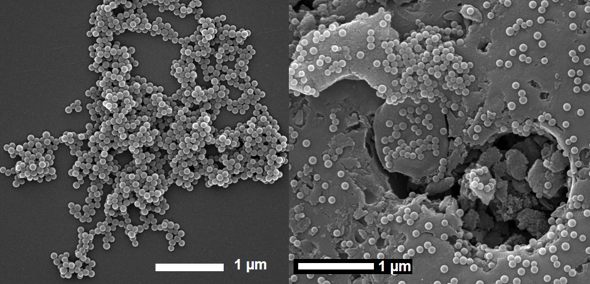« Nanoplastics in Drinking Water »

Occurrence and accumulation of plastics in aquatic systems and consequently in drinking water compartments have become a major concern about their impact on public health and the environment. Furthermore, nanoplastics differ from larger plastic debris due to the important surface area ratio and the small size that can penetrate and accumulate in organs. The aim of this work is to evaluate how nanoplastic particles can be removed from drinking water resources through adoption process and how water components such as natural organic matter and divalent ions can affect nanoplastics behavior and removal efficiency.
In this study funded by the SSIGE and SIG and performed in the Group of Environmental Physical Chemistry by Lina Ramirez under the supervision of Serge Stoll, Granular Activated Carbon (GAC) used in drinking water treatment plants is evaluated for its capacity to adsorb and remove polystyrene (PS) nanoplastics. It is found that the adsorption capacity and removal efficiency of PS nanoplastics are three times higher in Lake Geneva water than in ultrapure water. This improvement in adsorption capacity is due to the presence of Dissolved Organic Matter (DOM), resulting in PS surface charge modification, presence of divalent ions making possible the adsorption of PS-DOM complexes, and, aggregation of PS nanoplastics. This study reveals that GAC produced from renewable sources can be considered as a moderate adsorbent for the removal of PS nanoplastics in water treatment plants and that the presence of DOM and cationic species play a major role.
Lien vers l'article: https://archive-ouverte.unige.ch/unige:152390
RAMIREZ ARENAS, Lina Marcela et al. Nanoplastics adsorption and removal efficiency by granular activated carbon used in drinking water treatment process. In: Science of the Total Environment, 2021, vol. 791, n° 148175
